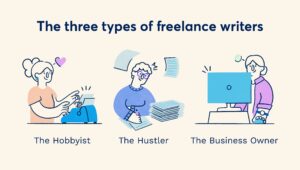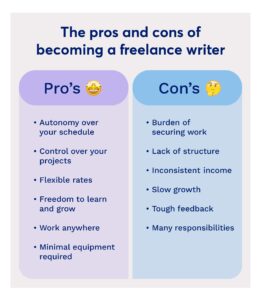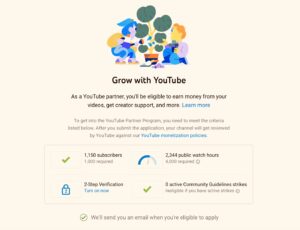How to Start Freelancing with No Experience: A Step-by-Step Guide
Learn how to start freelancing with no experience using these actionable steps. From choosing a niche to landing your first client, this guide has everything you need.
Did you know that over 59 million Americans freelanced in 2023? That’s more than one-third of the U.S. workforce. And here’s the best part—you don’t need years of experience to join their ranks. Whether you’re fresh out of school, transitioning careers, or simply looking to earn extra income, freelancing offers flexibility, freedom, and financial potential.
In this comprehensive guide, we’ll walk you through exactly how to start freelancing with no experience. You’ll discover how to find your niche, build a portfolio, land your first clients, and avoid common pitfalls. By the end of this article, you’ll have a clear roadmap to launch your freelance career successfully.

Why Starting Freelancing with No Experience Feels Hard
Many aspiring freelancers get stuck before they even begin because they believe:
- You need a degree or formal training.
- You must have an impressive portfolio from day one.
- You can’t charge clients without experience.
- It’s too competitive to stand out.
But the truth is, most successful freelancers started with zero experience. The key lies in strategy—not perfection. Let’s break it down.

Step-by-Step Guide to Start Freelancing Without Any Experience
Step 1: Identify Your Skills and Choose a Niche
The first step in becoming a freelancer is to figure out what you’re good at—and what people are willing to pay for. Ask yourself:
- What do I enjoy doing?
- Where do I already have some basic skills?
- What problems can I solve for others?
Popular beginner-friendly freelance niches include:
- Content writing
- Graphic design
- Social media management
- Data entry
- Virtual assistance
- Transcription
- Translation
Step 2: Learn the Basics (Even If You’re Not Perfect)
You don’t need to be an expert to start. Use free resources like YouTube, Coursera, or Skillshare to learn the fundamentals. Here are a few platforms to consider:
Step 3: Build a Simple Portfolio
Your portfolio proves you can deliver value—even if you haven’t worked professionally yet. Ways to build a portfolio quickly:
- Create sample projects (e.g., write blog posts, design mock logos).
- Offer to work for free or cheap for friends, local businesses, or nonprofits.
- Use platforms like Behance, Dribbble, or your own website to showcase your work.
Step 4: Set Up Profiles on Freelance Platforms
To find clients when starting out, sign up on popular freelance marketplaces. Some top options include:
Step 5: Apply to Jobs and Pitch Clients
When applying for jobs, personalize your proposals. Don’t just copy-paste—show you understand the client’s needs. Tips for effective pitches:
- Read the job description carefully.
- Mention specific examples from your portfolio.
- Explain why you’re the right fit.
Step 6: Deliver Great Work and Get Reviews
Once you land a gig, treat it like a real job. Communicate clearly, meet deadlines, and exceed expectations. Positive reviews will help you attract better-paying clients later.
Top Tips for New Freelancers With No Experience
- Start small: Take lower-paying jobs to build momentum and credibility.
- Be consistent: Apply regularly to stay visible on platforms.
- Network: Join Facebook groups, Reddit communities, and LinkedIn forums.
- Track time: Use tools like Toggl or Clockify to improve efficiency.
- Set boundaries: Define work hours and communicate them clearly.

Common Mistakes Beginners Make When Starting Freelancing
Avoid these pitfalls to set yourself up for success:
- Mistake #1: Charging too little forever. It’s okay to start low, but raise rates as you gain experience.
- Mistake #2: Taking every job that comes along. Be selective to maintain quality and avoid burnout.
- Mistake #3: Ignoring contracts. Always use agreements to protect yourself legally.
- Mistake #4: Failing to ask questions. Clarify scope, timelines, and payment terms upfront.
- Mistake #5: Not investing in self-development. Keep learning and improving your skills.
Real Stories: How Others Started Freelancing With No Experience
Hearing from those who’ve walked the path can inspire and inform your journey. Here are two real-life examples:
Case Study 1: Sarah, Content Writer
Sarah was working a full-time office job when she decided to try freelancing on the side. She started by writing guest posts for free on Medium, then joined Upwork and landed her first paid job within three weeks. Within six months, she had enough steady clients to go full-time.
Case Study 2: James, Graphic Designer
James taught himself Canva and Photoshop via YouTube tutorials. He offered to redesign his friend’s resume for free, which led to more referrals. After creating a strong Behance portfolio, he began getting clients directly through social media.
If you’re interested in building a personal brand while freelancing, check out our post on building a personal brand as a freelancer.
According to PayScale, the average hourly rate for freelance writers in the U.S. is $20–$40 per hour depending on experience and niche.

Frequently Asked Questions About Starting Freelancing With No Experience
Can I really start freelancing with no experience?
Yes! Many freelancers start with no formal background. What matters most is your willingness to learn and provide value to clients.
Do I need a portfolio to start freelancing?
While not always required, having a portfolio helps you stand out. You can create samples or offer free work to build one.
Which platform is best for beginners?
Upwork and Fiverr are great for new freelancers due to their large client base and easy-to-use interfaces.
How much should I charge as a beginner?
Research industry standards and start slightly below average to attract clients. For example, many new writers charge $10–$20/hour.
Is freelancing a stable career choice?
Freelancing can be very stable once you build a reliable client base and manage your finances wisely.
How long does it take to make money freelancing?
Some people earn within a week; others may take a month or two. Consistency and persistence are key.
Can I freelance while working another job?
Absolutely. Many freelancers start part-time and transition to full-time once they have enough income.
Final Thoughts: You Don’t Need Experience to Start Freelancing
Starting your freelance career with no experience might feel intimidating, but it’s entirely possible—and rewarding. By identifying your strengths, learning the basics, building a simple portfolio, and taking action, you can start earning as a freelancer today.
Remember, success doesn’t come from being perfect—it comes from showing up consistently and delivering value. So take the first step, apply for your first job, and keep improving along the way.
Got questions or want to share your freelance journey? Leave a comment below—we’d love to hear from you!
Ready to Launch Your Freelance Career?
Download our free checklist: “10 Steps to Land Your First Freelance Client” — and start your journey today.
